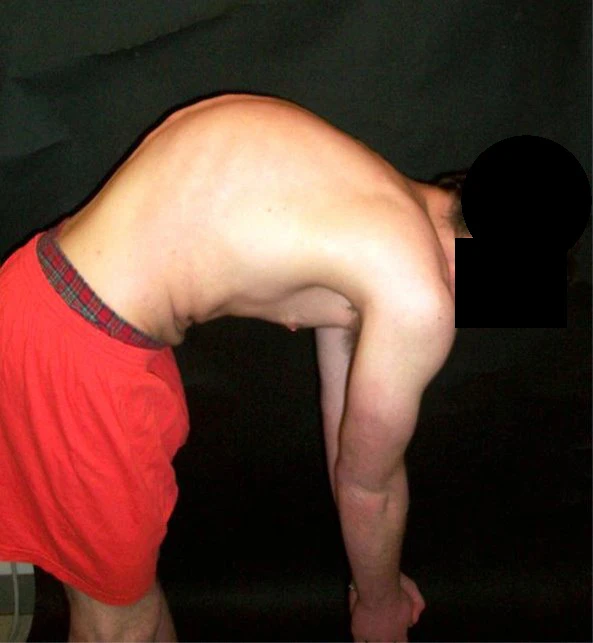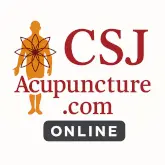This post may contain affiliate links and ads in which we may earn a small percentage of purchases.
Table of Contents
What is Hyperkyphosis?
Hyperkyphosis, also known as kyphosis or “hunchback,” refers to an exaggerated curvature of the upper spine. This condition is often associated with a rounded or hunched upper back, which can impact posture and overall spinal health.
While many believe kyphosis primarily affects older adults, it is seen across all age groups. Teens and young adults are also susceptible, especially when poor posture habits are established early in life. In older adults, age-related factors and prolonged poor posture are common causes.
Understanding the Spine’s Natural Curves
The human spine naturally has gentle curves that allow for flexibility and balance. These curves help distribute weight and absorb shock. However, when the curvature in the upper (thoracic) portion of the spine becomes exaggerated, hyperkyphosis occurs, causing visible rounding of the back.
This condition not only alters posture but may also affect the alignment of other parts of the body, including the neck and lower back, leading to discomfort and pain.
Portable dual-channel TENS/EMS device with 24 therapy modes for targeted muscle and pain relief.
 View Device
View Device
Why Does Kyphosis Happen?
There are several reasons why hyperkyphosis might develop:
- Postural Kyphosis: Often caused by poor posture habits developed over time, postural kyphosis can affect people of all ages. Sitting for long periods, slouching, or improper ergonomics at work can all contribute to this form of kyphosis.
- Age-Related Kyphosis: As we age, natural degeneration of the spine, weakened muscles, and conditions like osteoporosis can contribute to kyphosis.
Both forms can lead to discomfort, pain, and long-term issues if left unaddressed.
Scheuermann’s disease
Scheuermann’s disease, also known as Scheuermann’s kyphosis, is a condition that primarily affects the spine during adolescence. It causes abnormal rounding or excessive curvature of the upper back (thoracic spine), resulting in a “hunchback” appearance. Unlike postural kyphosis, which is caused by poor posture, Scheuermann’s disease is a structural deformity where the vertebrae become wedge-shaped, leading to the pronounced curvature.

Treatment Options for Hyperkyphosis
The good news is that hyperkyphosis, particularly postural kyphosis, is treatable without surgery in most cases. Here are several approaches that may be effective:
- Chiropractic Care: Manipulations of the spine can sometimes help alleviate the discomfort associated with hyperkyphosis by improving spinal alignment.
- Physical Therapy: Strengthening the muscles around the spine can help improve posture and reduce the excessive curvature. Therapy may include exercises to build core and back strength, improve flexibility, and correct posture.
- Acupuncture: Acupuncture is a safe and effective treatment for alleviating pain, reducing inflammation, and promoting proper muscle and tissue alignment. By stimulating specific points along the body’s energy channels, acupuncture can help restore balance and improve posture.
- Massage Therapy: Muscle manipulation and massage can provide relief by reducing tension in the back muscles and helping to realign the spine naturally.
- Posture Correction: Simple changes, such as using ergonomic chairs, being mindful of sitting and standing posture, and engaging in exercises like yoga, can prevent kyphosis from worsening.
In severe cases where the curvature becomes extreme and impacts lung function or other systems, surgery may be necessary. However, this is rare.
Can Acupuncture Help Kyphosis?
As acupuncturists, we often see patients who may not even be aware they have kyphosis. While they might not come in specifically for it, we discover signs of the condition during physical exams. Acupuncture, combined with posture-improving exercises, can help alleviate pain, promote healing, and support the body’s natural alignment.
When kyphosis affects other systems—such as respiratory function in severe cases—acupuncture can play a role in improving overall health and wellness. By promoting the flow of energy (qi) and targeting specific points related to the spine, acupuncture can support recovery and enhance the body’s natural posture.
Holistic Approach to Spine Health
I take a holistic approach when working with patients, blending acupuncture with modern anatomy and physiology. By looking at the whole person—body, mind, and energy flow—acupuncture can help with not only physical symptoms but also the root causes of imbalances.
If you’re struggling with poor posture, back pain, or suspect hyperkyphosis, please see your primary care provider and begin a journey to optimize your health.
More articles on health, acupuncture, and wellness.
7 Surprising Benefits of Flexibility for Your Health
Acupuncture After Neck Surgery: Help Patients Feel Better
Ginger: History, Modern Uses, and Benefits
Medical Disclaimer: This article is for informational and educational purposes only and is not a substitute for professional medical advice, diagnosis, or treatment. Always consult a qualified healthcare provider with any questions about a medical condition or treatment.





